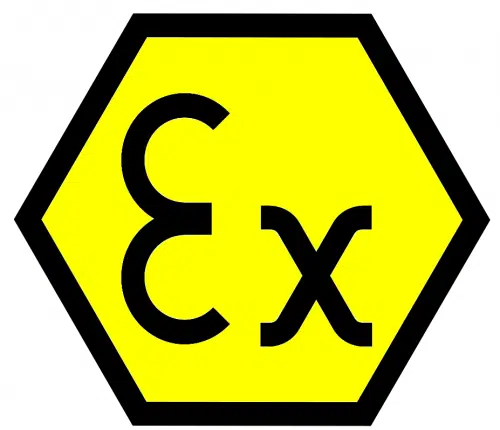Last edit: 17/07/2025
Directive 2014/34/EU, which came into force on 20 April 2016, aims to provide the requirements to be met by equipment and protective systems intended for use in potentially explosive atmospheres. Compared to the previous Directive 94/9/EC, the “process” to be followed (New Legislative Framework of 2008) leading to the verification of the compliance of equipment with the Directive is better clarified.
Depending on the type of equipment (electrical or non-electrical) and the ATEX Zone in which it is to be installed, there is a need or not for a notified body to mark it. The principle applied is as follows:
| Electrical equipment | Non-electrical equipment | |
| Zone 0 (20) | Notified body REQUIRED | Notified body REQUIRED |
| Zone 1 (21) | Notified body REQUIRED | NO Notified body needed |
| Zone 2 (22) | NO Notified body needed | NO Notified body needed |
CE marked equipment suitable for operation in ATEX zones bears the symbol shown in the figure.
ATEX equipment marking

The marking consists of two parts. The first part is required by the Directive, the second part by the technical regulations.
Regarding the first part of the marking, According to anex II( Directive 2014/ 34/ EU ), which refers to “Essential health and safety requirements relating to the design and construction of equipment and protective systems intended for use in potentially explosive atmospheres”, all equipment and protective systems must be marked indelibly and identifiably with the following minimum details:
- name, registered trade name or registered trademark and address of the manufacturer
- CE marking( in accordance with Art. num. 765/2008 )
- designation of the series or type
- serial number or serial number, if available
- year of construction
- the specific explosion protection marking followed by the symbol of the equipment group and category
- for equipment group II, the letter “G” (relating to explosive atmospheres caused by gases, vapors or mists), and/or the letter “D” (relating to explosive atmospheres caused by dust). in addition, if necessary, they must be marked with all essential information with their safe use.
